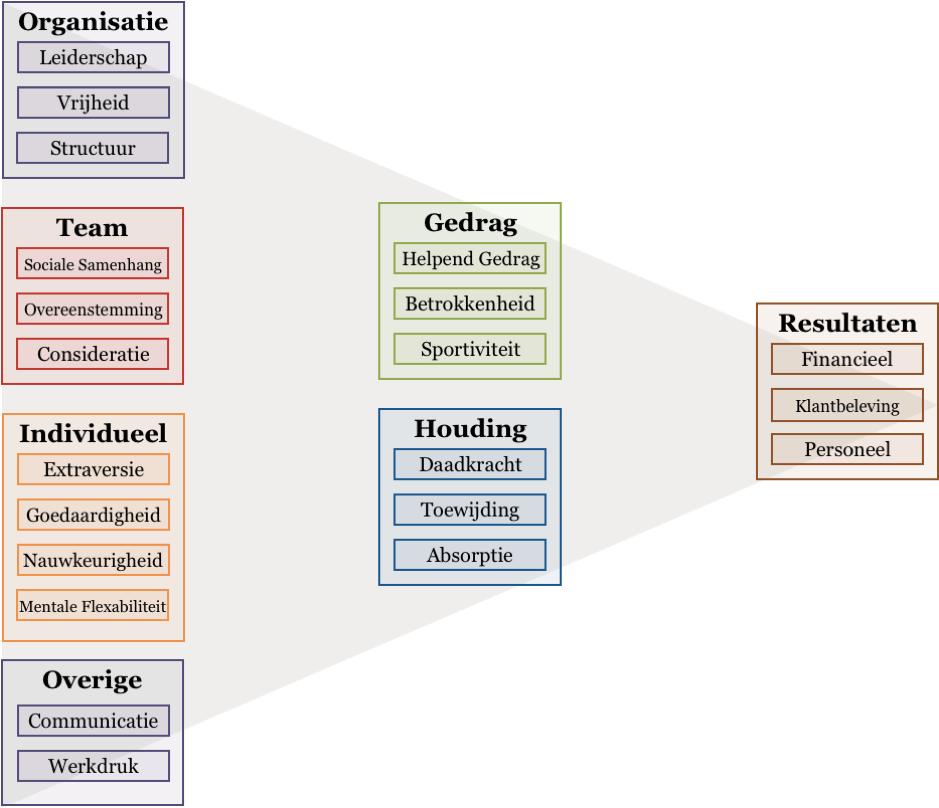
Employee experience 
See how we do EX research
View Our EX ApproachThis presentation provides an up-to-date overview of how we measure and analyze the Employee Experience. The website will soon be updated with recent cases about our customers ING, UMCG, Ahrend, Cordaan and Holland Casino.
Why it’s important to map Employee Experience
Performance indicators such as turnover (development), conversion, absenteeism, turnover and customer satisfaction are well measurable. In practice, these indicators are often used as steering information. However, these are so-called lagging indicators that cannot be directly affected. We can demonstrably relate them to behaviour and the attitude of employees and thus offer you the opportunity to improve your service and business result in a targeted way.
What we can do in that
To understand differences in customer satisfaction, turnover, conversion, retention, absenteeism or turnover between employees, teams or affiliates, we collect information about the experience of employees. We do this on the basis of 25 individual aspects that together form the Employee Experience. With an Employee Experience, the ‘soft side’ of the organisation, what happens in the workplace, is made as insightful and numerically ‘hard’ as KPIs. Our EXI research model is based on the premise that differences in customer satisfaction, (financial) results, turnover and absenteeism between, for example, affiliates, teams, flights or employees (see right in the model) are the result of the behaviour and attitude of employees towards the customer, each other and the organization (see middle of the model). However, the behaviour and enthusiastic attitude of employees cannot be directly adapted. This requires an understanding of what is happening on the shop floor at the organisation, team and individual level (links in the model). With this model, the Employee Experience is measured and followed in a scientifically based way. After this, the data can be used to demonstrate how the 25 aspects of the Employee Experience affect business results and customer experience.

© insinto
How does it work?
Phase 1: Collecting data in the workplace Step 1: Measuring Employee eXperience Phase 2: Understanding the workplace gives insight into the impact on other business units Step 2: Understand the drivers of behavior and posture Step 3: Understand employee eXperience’s impact on financial results Phase 3 : Continue to measure, evaluate and improve with monthly EXI quickscan. Step 6: Visualize and disseminate results in the organization Step 7: Improve on the findings Step 8: Continuous measurement, evaluation and control
Phase 1. Collecting data in the workplace
We measure what happens in the workplace with our own (scientifically validated) questionnaire. This questionnaire goes far beyond a traditional employee (satisfaction) survey. Our method is based on more than 500 scientific studies. During two years of research, 25 aspects of sociology, psychology, organizational sciences and personnel management have been selected that are determined to be crucial for good performance in customer-oriented organisations. These 25 aspects together measure the Employee Experience. These include: style of leadership, team cohesion, individual personalities, the behaviour of employees and the enthusiasm (engagement) of employees. Linking this data to data on absenteeism, churn, conversion, and customer satisfaction ensures that there is no longer just numerical understanding of performance, but also in the underlying causes of this performance.
Phase 2. Understanding the workplace provides insight into the impact on other business units
After examining the shop floor, the employees are known how they experience their work and interact with each other. This data is analyzed, together with the customer experience, customer satisfaction and financial performance of, for example, a branch, team or flight. This is to explain differences in customer satisfaction and different results. Structural Equation Modeling builds one model that links the sources. The knowledge about the behaviour and attitude of employees (and the underlying causes) and its impact on the organization, team and individual level, customer satisfaction, conversion, retention and financial results are combined. With these analyses it becomes clear why employees exhibit desirable behavior towards the customer, each other and the organization and which make employees and affiliates perform better.
Phase 3. Continue to measure, evaluate and improve with monthly EXI quickscan.
We believe in an integrated approach in which constant measurement, analysis and improvement leads to better results. One-off measurements and findings ‘throwing over the fence’ leads to nothing. It is precisely the continuous monitoring of the Employee Experience Index and the continuous evaluation of the results that are important. Each individual employee receives a ‘large’ annual measurement once a year and a 2-minute EXI quickscan once a year. This does not create survey fatigue, moreover, the advantage is that there is no ‘blind flying’. By using this monthly thermometer, it is clear at all times whether the chosen change strategy and practical adjustments have the intended effect. Monthly insight offers the opportunity to assess whether the chosen route yields the intended result and where the adjustment of the course is needed.